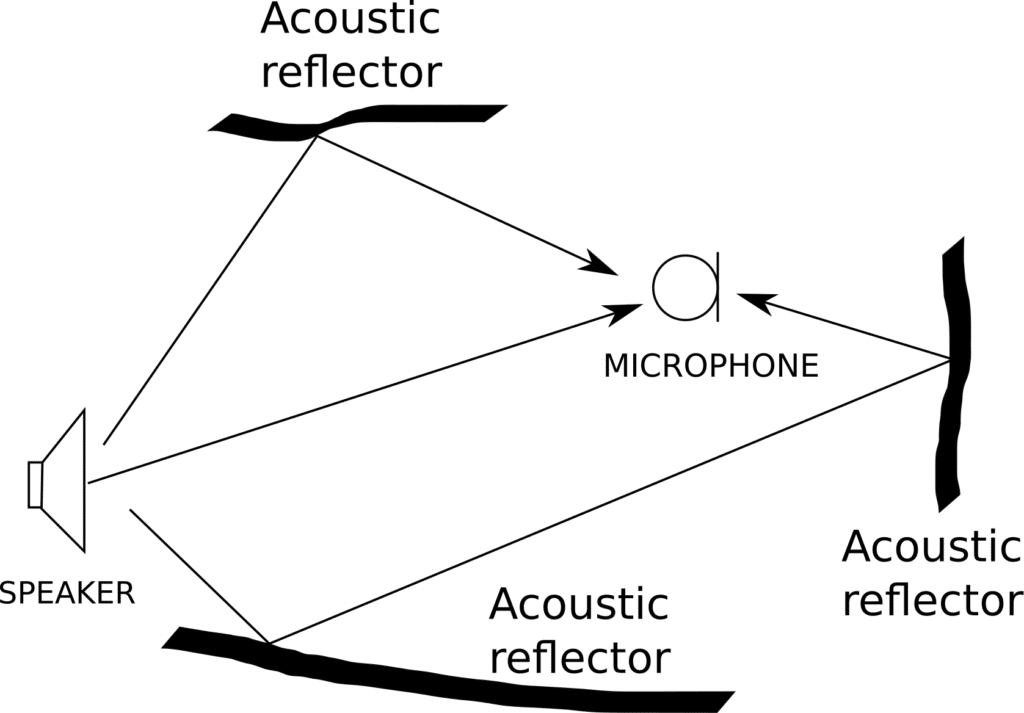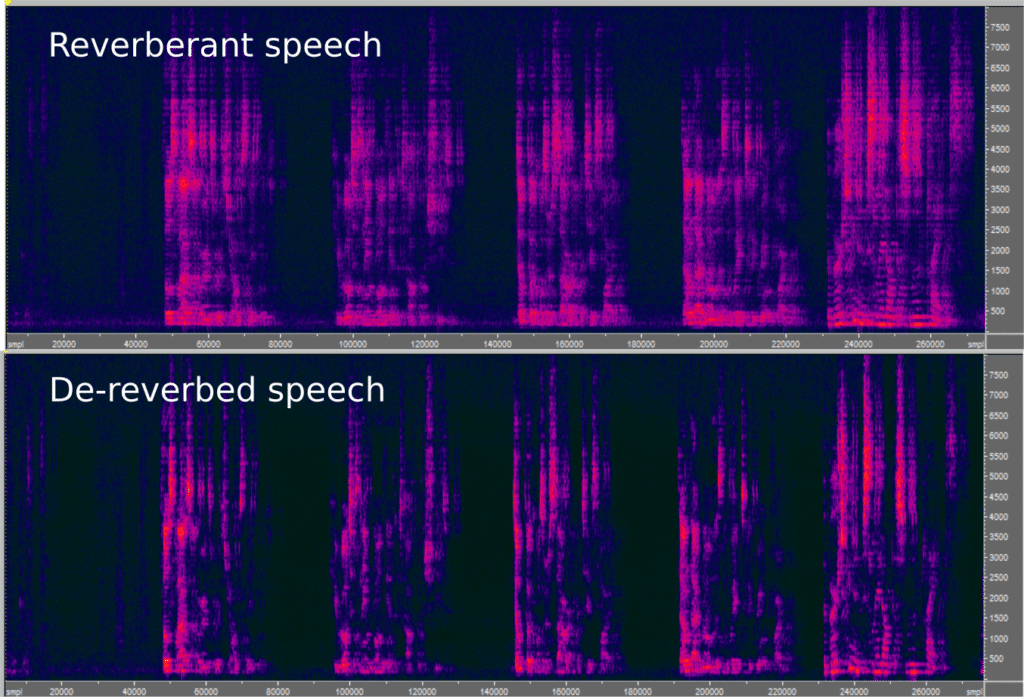The classical acoustic single channel dereverberation assumes that there is a reference signal which is being utilized to estimate the acoustic impulse response of the echo path. However, in a condensed room setting, near end speech can also be heavily reverberant and will need to be removed without any reference signal. Consider the case of a single channel blind de-reverberation problem as illustrated in Figure 1 below:
Figure 1: Illustration of room reverberation
It can be seen that the multiple paths have different travel times to the microphone. This will lead to resounding of vocals after the initial direct path vocal. The can be modeled mathematically as:
The frequency domain representation becomes:
An algorithm deployed in the frequency domain should estimate and remove . A sample result of VOCALs algorithm to remove revereberation is shown in Figure 2 below;
Figure 2: Sample result of single channel blind dereverberation
VOCAL Technologies offers custom designed solutions for beamforming with a robust voice activity detector, acoustic echo cancellation, blind single channel dereverberation and noise suppression. Our custom implementations of such systems are meant to deliver optimum performance for your specific beamforming task. Contact us today to discuss your solution!

